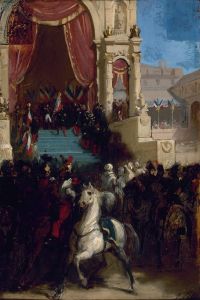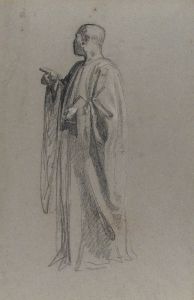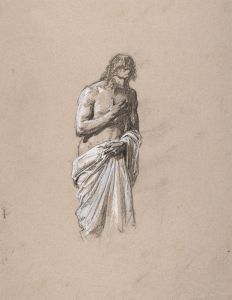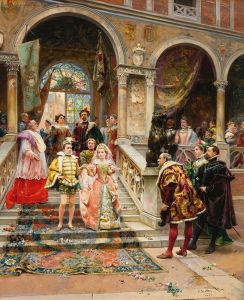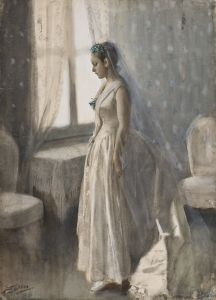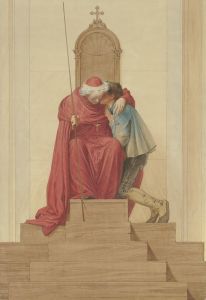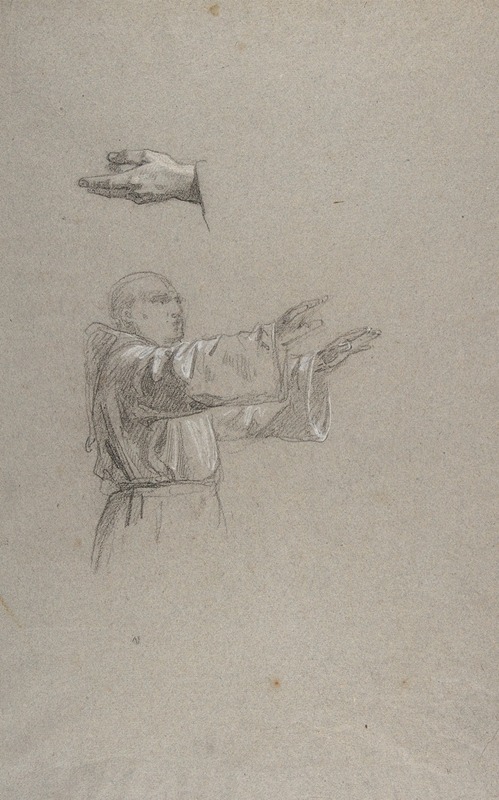
Cleric with Raised Arms
A hand-painted replica of Isidore Pils’s masterpiece Cleric with Raised Arms, meticulously crafted by professional artists to capture the true essence of the original. Each piece is created with museum-quality canvas and rare mineral pigments, carefully painted by experienced artists with delicate brushstrokes and rich, layered colors to perfectly recreate the texture of the original artwork. Unlike machine-printed reproductions, this hand-painted version brings the painting to life, infused with the artist’s emotions and skill in every stroke. Whether for personal collection or home decoration, it instantly elevates the artistic atmosphere of any space.
Isidore Pils was a notable 19th-century French painter, recognized for his historical and religious compositions. One of his works, "Cleric with Raised Arms," exemplifies his skill in capturing dramatic and emotive scenes. Pils was born in Paris in 1813 and studied under François-Édouard Picot at the École des Beaux-Arts. His early career was marked by a focus on religious and historical subjects, which were popular themes in the academic art circles of the time.
"Cleric with Raised Arms" is a painting that reflects Pils' interest in religious themes, although specific details about the painting, such as its creation date and current location, are not widely documented. The painting likely depicts a scene involving a religious figure, possibly a priest or monk, engaged in a moment of spiritual fervor or supplication. This is consistent with Pils' tendency to portray figures in moments of intense emotion or action, a characteristic of his broader body of work.
Pils gained significant recognition for his ability to convey narrative and emotion through his compositions. His works often featured dramatic lighting and carefully composed figures, drawing viewers into the depicted scene. This approach is evident in his more famous works, such as "Rouget de Lisle Singing La Marseillaise" and "The Death of a Sister of Charity," which showcase his talent for storytelling through art.
Throughout his career, Pils received numerous accolades and commissions. He won the prestigious Prix de Rome in 1838, which allowed him to study in Italy. This experience profoundly influenced his style, as he absorbed the techniques of the Italian masters and incorporated them into his own work. Upon returning to France, Pils continued to build his reputation, participating in the Salon exhibitions and receiving commissions for public works.
In addition to his religious and historical paintings, Pils also contributed to the decoration of public buildings in Paris. Notably, he worked on the decoration of the Church of Saint Vincent de Paul and the Palais Garnier, the latter being the famous opera house in Paris. His contributions to these projects further cemented his status as a respected artist of his time.
Pils' work, including "Cleric with Raised Arms," is characterized by its attention to detail and the ability to evoke a sense of drama and emotion. His paintings often reflect the values and interests of 19th-century French society, particularly its fascination with history, religion, and the human experience.
Despite the lack of specific information about "Cleric with Raised Arms," Isidore Pils' legacy as an artist is well-documented. His influence extended beyond his lifetime, as he became a professor at the École des Beaux-Arts, where he taught and influenced a new generation of artists. Pils passed away in 1875, but his works continue to be appreciated for their technical skill and emotional depth.






